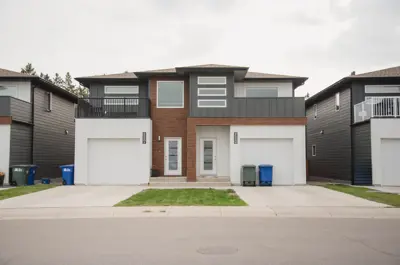1. Access to Millions in Critical Funding
The City is applying for $36.67 million through the Canada Housing Infrastructure Fund (CHIF) for funding to support the first phase of upgrades at the City’s Waste Water Treatment Plant and a further $4-$6 million application for the planning stream of the funding. The total preliminary, high-level estimates have identified a project cost of $150-$250 million over the next 10 years for the three-phase upgrade.
To be eligible, municipalities with populations over 30,000 must allow four residential units as-of-right in all low-density zones with municipal servicing. This bylaw amendment is necessary to maintain Prince Albert’s eligibility under the CHIF program — and to avoid losing access to millions of dollars in federal funding for critical infrastructure upgrades.
Without this funding, the cost of these necessary upgrades would fall to the City’s water utility ratepayers, placing a significant financial burden on residents and businesses.
Should the City be successful in accessing federal and provincial funding, the City’s Utility will save an estimated $2.8 million in annual debt repayments, allowing the Utility to minimize rate increases to residents. The table below outlines the impact to the Utility of the project with and without funding:
Impact to the Utility of the project with and without funding
| Waste Water Treatment Plant Phase 1 Cost Estimate |
$ 80,000,000 |
| Annual Debt Payments without funding (estimated) |
$ 6,100,000 |
| Annual Debt Payment with funding (estimated) |
$ 3,300,000 |
| Estimated Annual Savings with funding |
$ 2,800,000 |
2. Responding to Prince Albert’s Housing Needs
These zoning changes help to eliminate zoning barriers so that more housing options can be created gradually over time.
By permitting more housing types in all areas of the City, and not just single-family homes, developers will be able to respond to market needs and build the types of housing that people want to live in.
Prince Albert’s Housing Needs Assessment identified that “there is a mismatch between housing stock and need. While 61.7% of households are one- or two-person, over 33.4% of homes have four or more bedrooms. This results in underutilized homes and a shortage of smaller, more affordable units.”
With the hospital expansion set to open in the Spring of 2028, new health care workers will be required to staff the larger facility. A variety of housing options need to be available to respond to this need.
According to the Healthcare Practitioner Community Support Toolkit released by the Saskatchewan Healthcare Recruitment Agency, “Many small urban areas, and rural and remote communities, lack a sufficient supply of rental homes, which is typically what is sought when joining a new community. Moreover, even if housing options are available, they may not be affordable or equipped with the necessary amenities for the practitioner and their family.”












